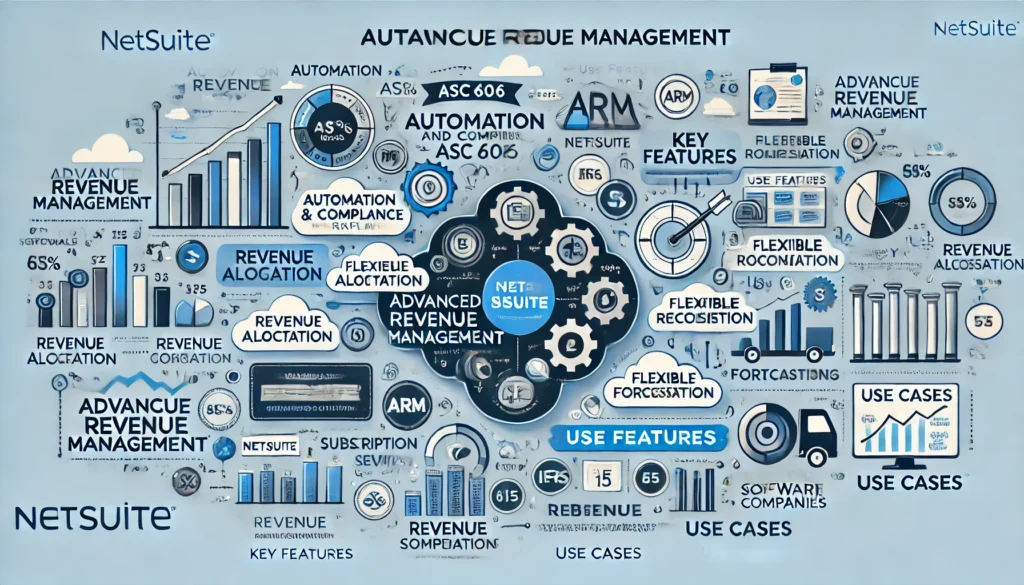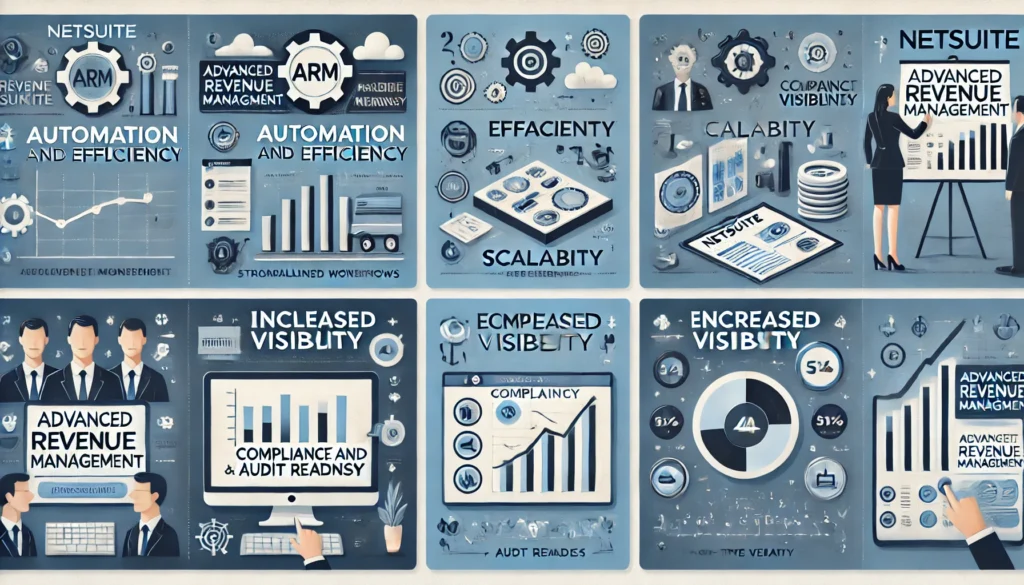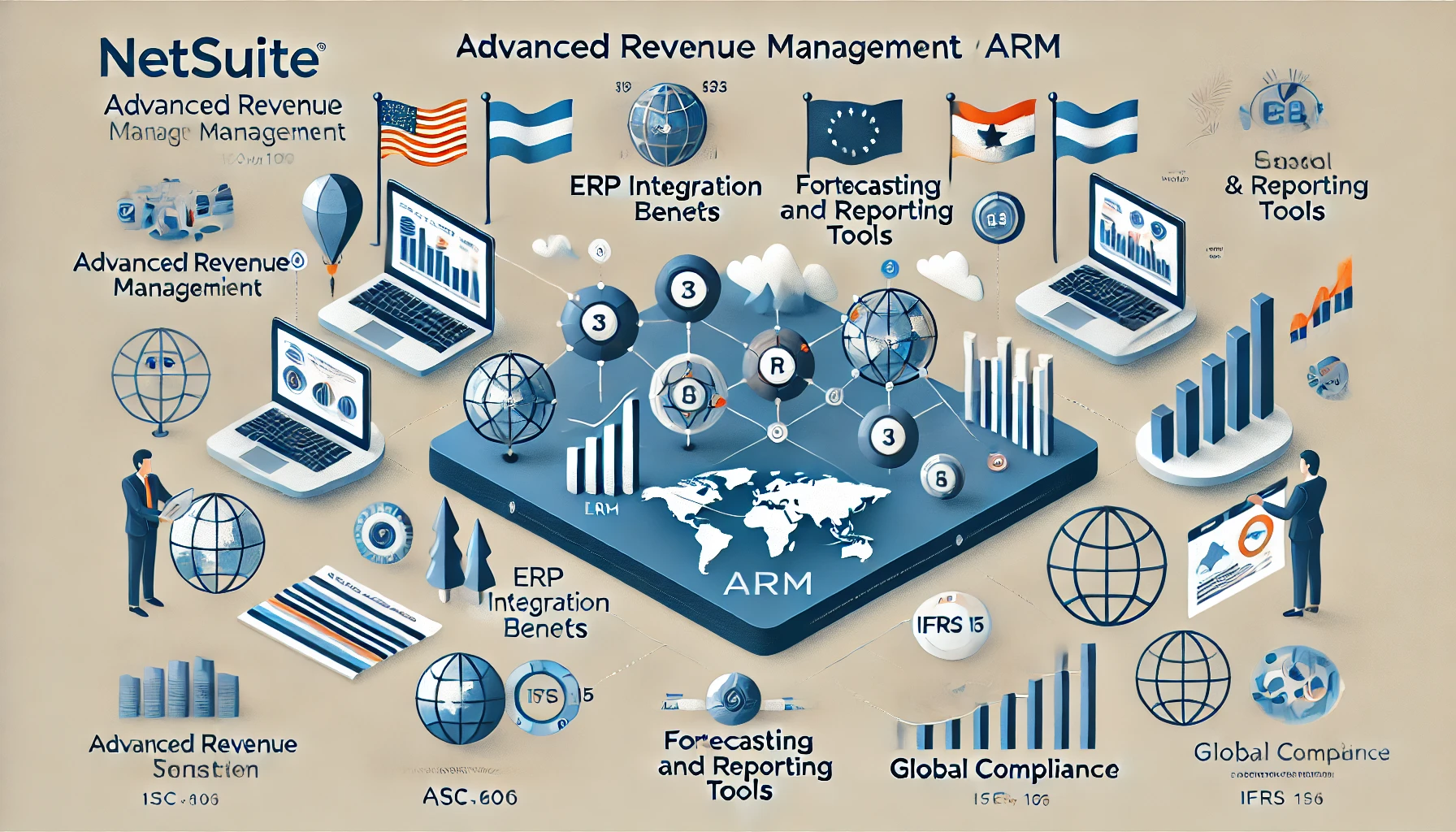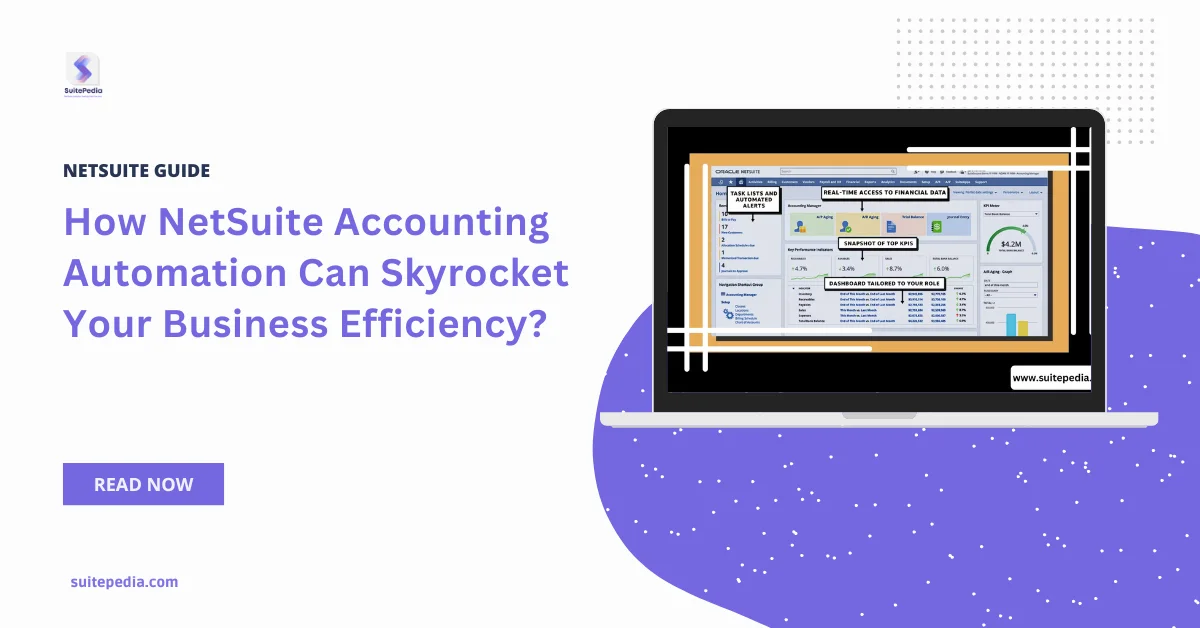In today’s competitive business landscape, managing revenue effectively is not only a matter of compliance but also an imperative for strategy. Companies continually seek tools that streamline revenue recognition while keeping up with the dynamic accounting standards such as ASC 606 and IFRS 15. NetSuite’s Advanced Revenue Management (ARM) is a powerful module specifically designed to address these needs, giving businesses the ability to automate, streamline, and optimize revenue management processes.
This blog looks into how organizations can make use of the NetSuite ARM features to enhance financial efficiency and compliance.

Table of Contents
ToggleNetSuite's Advanced Revenue Management
The ARM module of NetSuite is an all-inclusive solution that makes revenue recognition easy for any business, no matter how small or big. It automates the allocation, recognition, and reporting of revenue to ensure compliance with regulatory standards. ARM seamlessly integrates with other modules in NetSuite to enable businesses to manage complex revenue scenarios.
Key Features:
- Revenue Allocation: Automates revenue allocation across multiple performance obligations.
- Flexible Revenue Recognition: Supports various recognition methods such as time-based, milestone-based, or event-driven.
- Compliance: Ensures adherence to accounting standards like ASC 606 and IFRS 15.
Forecasting and Reporting: Offers insights through predictive forecasting and comprehensive reporting tools.

Benefits of Using NetSuite's ARM
- Automation and Efficiency: Manual revenue recognition processes are error-prone and inefficient. ARM automates these processes, reducing the potential for non-compliance and providing finance teams with valuable time to focus on more important matters.
- Scalability: With business growth, revenue recognition becomes increasingly complex. ARM ensures scalability, enabling organizations to cope with increased transaction volumes and sophisticated revenue arrangements.
- Compliance and Audit Readiness: The module streamlines conformity to revenue recognition standards for transparency and accuracy in the financial statements. Its audit-friendly features also make compliance checks less cumbersome.
- Increased Visibility: Using real-time reporting and forecasting, ARM equips stakeholders with critical insights into revenue streams and aids strategic decision-making.
Core Components of ARM
Revenue Arrangements: Revenue arrangements in NetSuite provide the central framework for managing contracts as well as performance obligations. ARM can automatically create revenue arrangements any time a sales transaction is recognized, thus reducing manual involvement.
- Revenue Recognition Rules: Users can define recognition rules particular to business needs. Organizations offering subscriptions can configure periodic revenue recognition schedules for any month.
- Fair Value Pricing: ARM supports fair value pricing by determining SSPs for goods or services. This is a critical element in businesses that require transaction price allocations across several deliverables.
- Automated Revenue Reallocation: Automated reallocation of revenues based on changes in the contract terms while ensuring it maintains compliance through updated performance obligations
Forecasting Tools: ARM simplifies revenue forecasting. Finance teams can project future revenues and assess how changes in contracts or market conditions might impact financial outcomes.
How to Implement NetSuite's ARM
Implementing ARM requires a structured approach. Here’s how businesses can ensure a smooth rollout:
- Assess Business Needs: Before implementation, identify your organization’s specific revenue recognition challenges. Whether it’s managing complex subscription models or adhering to new compliance standards, understanding these needs is crucial.
- Leverage Expert Consultation: Working with a NetSuite partner or consultant ensures that the implementation aligns with your business requirements and industry best practices.
- Configure Revenue Rules and Templates: Define revenue recognition rules and templates that reflect your business model in the implementation process. This is a critical step toward automating processes and ensuring accuracy.
- Data Migration and Validation: Data migration from legacy systems can be challenging. Perform thorough data validation to ensure that all revenue-related information is accurate and up to date.
- Training and Adoption: Make sure that your finance team is ready to work with ARM. NetSuite has excellent training that will make the user work efficiently on the system.
- Monitor and Optimize: After implementation, keep monitoring the performance of ARM. Use its reporting feature to identify areas for improvement and optimize the process as needed.
Use Cases of NetSuite's ARM
- Subscription-Based Business: Subscription-based businesses use ARM to manage recurring revenues. The module automates revenue recognition schedules, so compliance and efficiency are met.
- Software and Technology Companies: With license agreements that are complex as well as multi-element in arrangement, software companies benefit to a great extent from allocation and fair value pricing facilities of ARM.
- Retail and E-commerce: ARM supports businesses with bundling products by allocating the revenue based on SSP so that transparency in financial reporting is enhanced.
Professional Services Firms: Service companies can use ARM to determine revenue based on project-based milestones or time-and-material arrangements.
Key Metrics to Track with ARM
Leveraging ARM does more than automate; it equips businesses to track key metrics that impact the bottom line:
- Deferred Revenue: Track the amount of revenue that is yet to be recognized.
- Revenue Forecast Accuracy: Measure how close the forecasted revenue is to actual revenue.
- Performance Obligation Fulfillment: Track the fulfillment status of obligations under contracts.
- Compliance Score: Track compliance with regulatory requirements through automated reporting.
Revenue Management Future Trends with NetSuite
AI and Machine Learning Integration
Future releases of ARM will probably include AI to drive predictive forecasting and anomaly detection in revenue data.
- Enhanced Analytics: Businesses can drill down into revenue trends and derive actionable insights based on enhanced analytics.
- International Compliance Updates: As international accounting standards develop, NetSuite will, no doubt, continue updating ARM to address global compliance requirements.
- Seamless ERP Integration: The integration between ARM and other ERP modules will become more robust, providing a unified platform for all financial operations.
Tips for Maximizing the Value of ARM
Regularly Update Revenue Rules
As business models evolve, ensure that your revenue recognition rules are updated to reflect changes in contracts or product offerings.
- Utilize Dashboards: ARM dashboards provide an at-a-glance view of revenue performance. Customize these dashboards to align with your KPIs.
- Collaborate Across Departments: Engage the sales, operations, and finance teams in using ARM to ensure that all departments work harmoniously towards revenue goals.
Maximize the Potential of NetSuite's Support and Community
To help businesses realize ARM’s full potential, NetSuite avails a rich library of user guides, forums, as well as support services for its users.
NetSuite’s Advanced Revenue Management module is a game-changer for businesses navigating the complexities of modern revenue recognition. It automates critical processes, ensures compliance, and provides actionable insights to allow organizations to focus on strategic growth rather than operational challenges.
Whether you are a subscription-based company, a professional services firm, or a retailer with bundled offerings, NetSuite’s ARM equips you with the tools needed to manage revenue efficiently. Businesses can unlock significant value and maintain a competitive edge in today’s fast-paced economy by implementing this module effectively and staying updated with its evolving features.
For more insights and tips on how to use NetSuite’s features, stay tuned to Suitepedia, your go-to resource for all things NetSuite!



